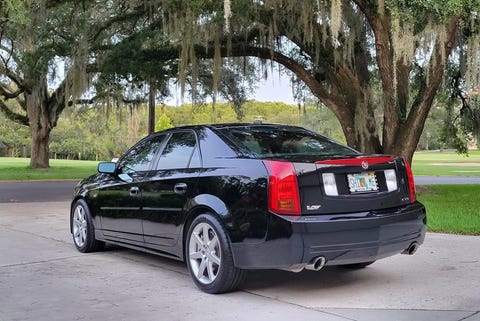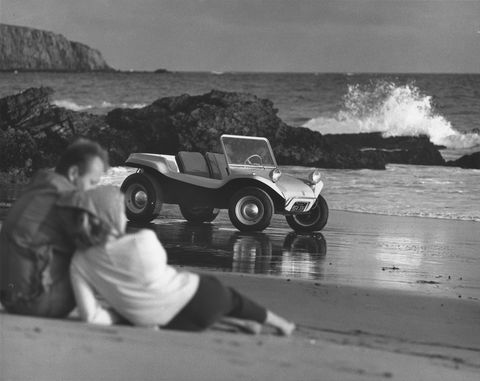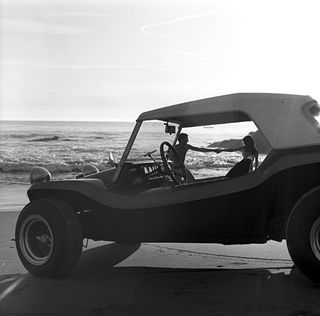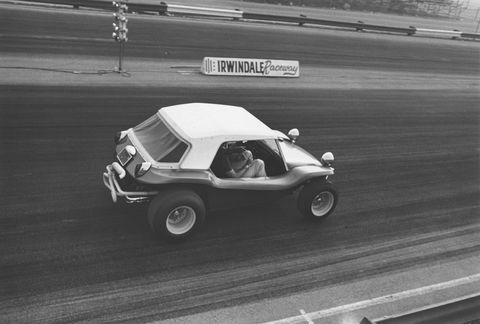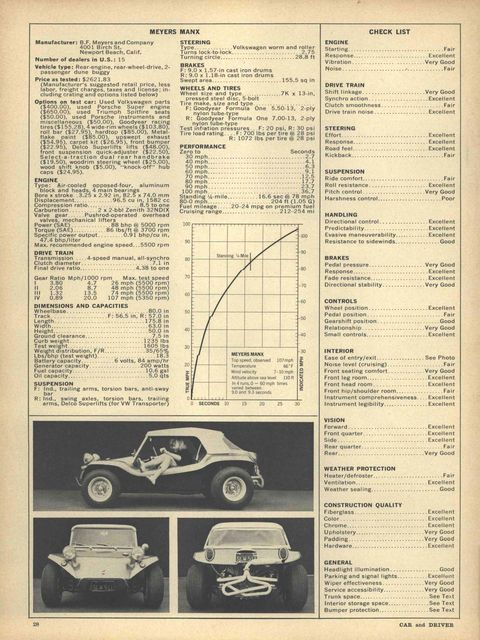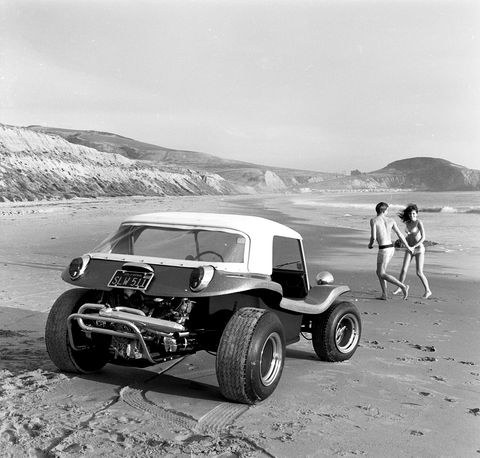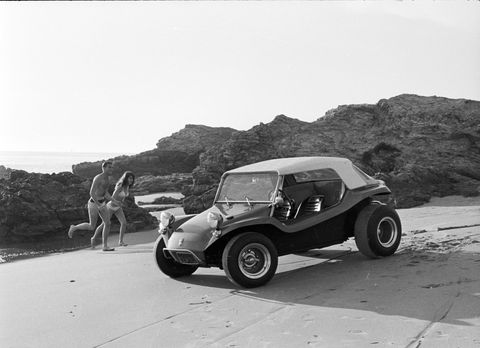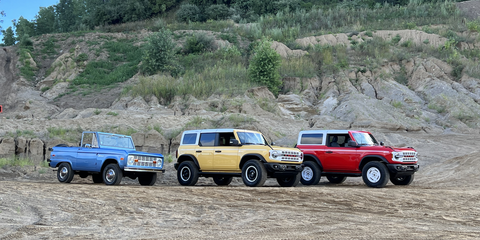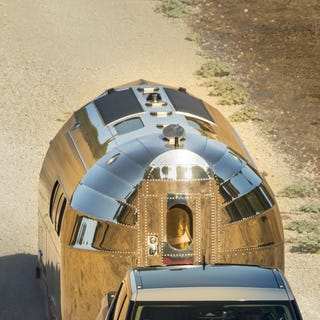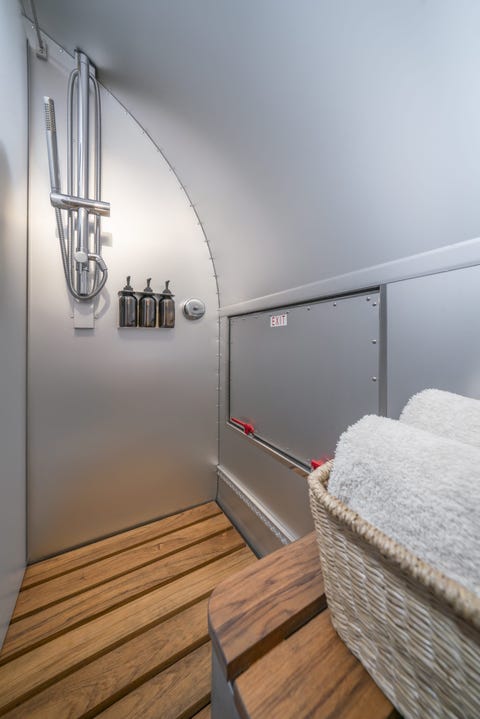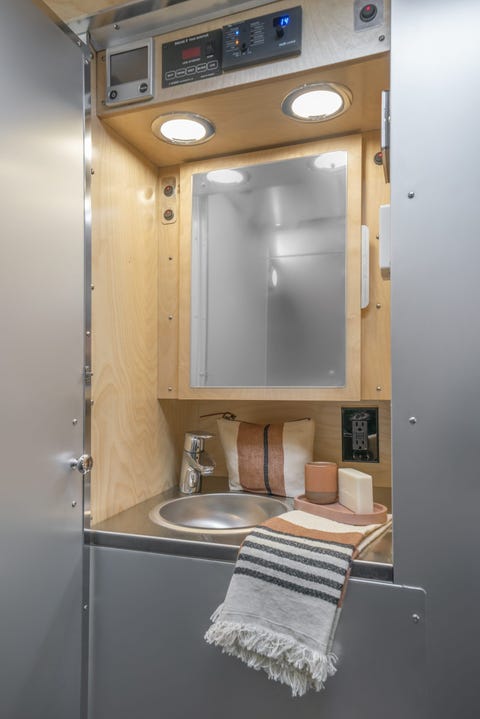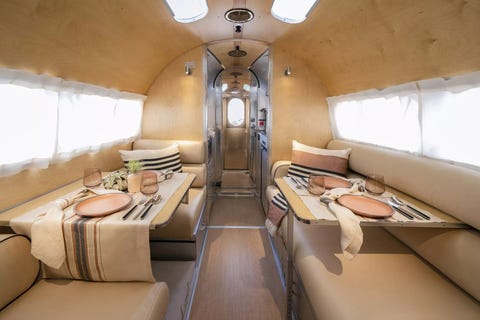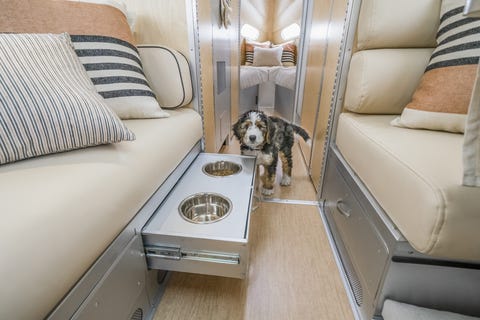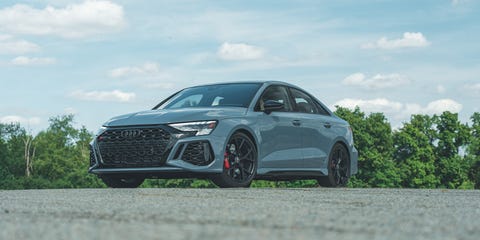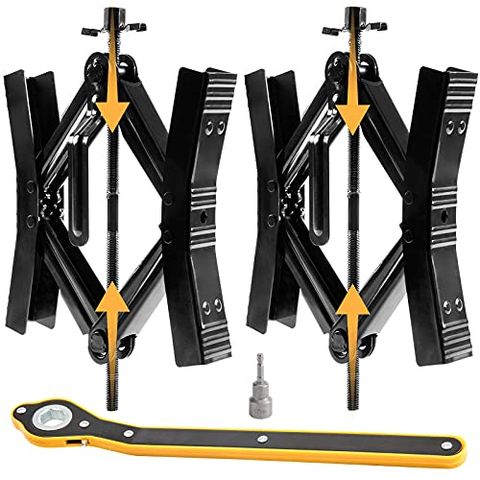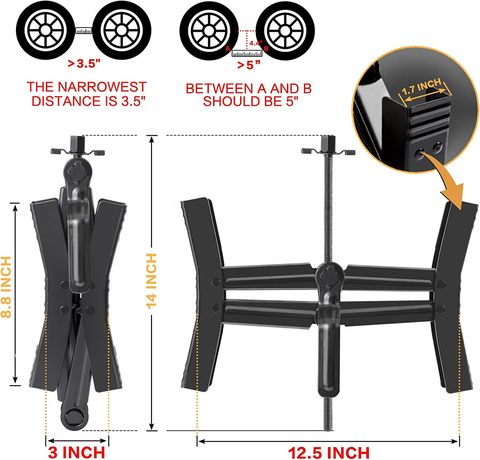From the April 1967 issue of Car and Driver.
The Meyers Manx is all things to all men. Our first glimpse of one was from directly astern, and it looked like some kind of crazy scout car, a mixed-up command vehicle. Its maker senses in it something of the classic character of Mercer Raceabouts and Apperson Jackrabbits. No two of its 250-odd owners see it exactly the same way.
The outdoor types say it’s perfect for pack trips and hunting expeditions. Hot-rodders hail it as the reincarnation of the street roadster. Kooky girls think it’s kinky, or is it vice versa? Frustrated executives can’t decide if it’s better suited as a station car or as an escape module. Surfers swear it’s the woody of the future. Sober, pragmatic men rationalize their passion for it by telling themselves that it’s a sensible, low-cost, all-purpose utility runabout. Motorcyclists allow as how it’s almost as good as having two bikes. Sports-car enthusiasts say it delivers more excitement per pound than a Ferrari GTO. Pontiac GTO owners try to look the other way . . . unsuccessfully. And dune buggy racers say it’s the end. The only thing they all agree on is that it’s more soul-freeing, leaping, bounding, uninhibited fun than anything else they’ve ever driven—on or off the road. We’ll buy that.
The Meyers Manx is the perfect answer for the man who’d rather roll his own. It’s a kit car. It costs $635, plus whatever you have to spend for the Volkswagen parts necessary to complete it, plus labor—unless you do it yourself. It’s not difficult to assemble; any guy with average mechanical ability could do the job over a couple of weekends. And for power: Volkswagen, Corvair, Porsche—you name it.
That’s one of the great things about the Meyers Manx—its only limitation is your own imagination. You can buy the basic kit (there’s an even more basic, stripped kit for $498), pay $100 for a wrecked VW, throw it together and forget it, or you can build it up with all new parts and tender loving care. It’s your choice—all the way up to a 200-hp engine, metalflake paint job, luxury interior, hard top, side curtains, mag wheels, four-wheel disc brakes, fully adjustable suspension, and racing tires.
The Meyers Manx is the car for the man who’s fed up with dealers, wheelers, factory-installed options he doesn’t want, trade-ins, discounts, high pressure, hard sell—the whole bag. About half the customers of B. F. Meyers and Company are tired businessmen who buy a Manx to put together in their spare time, a project they think will take their mind off their work. They say they’ll give it to the kids as a present when they’re finished, but like electric trains at Christmastime, they can’t let go. The kids don’t see much of the Manx that Daddy built, nor of Daddy, for that matter—he’s off blowing his mind on some winding country road.
That’s another great thing about the Meyers Manx. It’s a real car. You can license it, and insure it, and drive it anywhere, anytime. With the top and side curtains in place, it’s as snug and watertight as any little imported roadster. You can hook up the heater and make it all warm and toasty in sub-zero weather. With snow tires, it’ll go through blizzards that would stop a snowmobile in its tracks. With super-balloons, it’ll dust dunes with the best four-wheel-drive Jeeps and Broncos. And with racing tires, it’ll outhandle and outbrake any sports car we’ve ever tested.
Although the Manx was originally designed as a dune buggy, it’s equally at home on pavement. One of the maker’s favorite tricks to demonstrate the mountain-goat agility of the Manx is to drive it onto one of those 45-degree cobblestone slopes under a freeway bridge. The demonstrator steers the Manx straight up under the girders, racks the wheel over, and leaves it racing around in a small circle up there on the steep incline like it was gyro-stabilized, while the passenger hangs on for dear, sweet life. This act is usually followed by a leap off a precipice onto and across a field of basketball-sized rocks, overland to the beach, a quick tour at terrifying angles over the sand dunes, then down to the water’s edge to speed along, playing tag with the waves, and finally—mercifully—home again.
We managed to maintain our equilibrium during this phase of the test, but really got unhinged when we slipped behind the wheel for the panic stop from 80 mph. It squeaked to a halt in an unbelievable 204 feet, or 1.05 g—the kind of performance you only expect to find in a Chaparral. Impossible! At least with stock Volkswagen brakes, we thought, and tried again. Hmmm, 210 feet (1.02 g). Everything was checked. Again: 207 feet (1.03 g).
The Manx’s handling is difficult to describe, but in a word, it’s quick. It’s like wearing a pair of pants—you turn, it turns. It darts rather than steers, and it sticks like mad. Understeer it’s got, but after sending all our instruments off scale at well over 1.00 g, we gave up trying to make it break traction and slide.
One Corvair-powered Manx is the scourge of the gymkhana circuits, having won the Southern California autocross championship two years running—including taking 22 events in a row—against all comers: Cobras, Lotus Super Sevens, and all. Another Manx won some kind of nutball race over rock trails in the Colorado foothills. A stock Manx could probably win the Big Bear motorcycle enduro outright, if it was eligible. In fact, one four-wheel-drive club outlawed the Manx from its dune races because the Manx has only two-wheel drive, which the outraged club members said gave it an unfair advantage. Sour dune grapes.
But the Manx’s greatest victory—the legend that will be passed from generation to generation—was at last year’s Pikes Peak hillclimb. Ted Trevor, owner of the Crown Manufacturing Company, maker of kits to adapt Corvair engines to Manxes, Volkswagens, and Porsches, towed his racing Manx from California to Colorado with his street Manx. Don Wilcox, who had never seen the hill before, qualified Trevor’s Corvair-powered Manx over the short course in 6:03.4. Running in the under-305-cubic-inch sports-car class, the Manx was faster than all the sports cars, including Ak Miller’s undefeated 427 Cobra Kit Special, and faster than all but seven of the highly specialized Championship hillclimb cars. During the race itself, Wilcox was handily ahead of Miller’s time, and practically within sight of the finish, when a line fell off the fuel pump. Wilcox hopped out, ran to a phone, and called Trevor down at the start line, urging him to race the street car—just for kicks. Trevor jumped into the heavier, less-powerful street Manx and won the class by a 22-second margin. Shaken, USAC abolished the sports-car class for 1967.
Bruce F. Meyers, 40, sole proprietor of Bruce F. Meyers and Company, is the originator, designer, and builder of the Meyers Manx. Meyers is possibly the most gifted fiberglass artist ever to work in that difficult medium. He had built a 42-foot fiberglass catamaran, the “Hinano,” with his bare hands, and was looking for new designs to conquer. He had sold his old, beat-up Volkswagen to buy an old, beat-up Porsche from a guy in Texas, who had neglected to tell him that the car had been rolled and its chassis was somewhat out of alignment. Okay, said Bruce F. Meyers, I’ll build my own damn car.
Thus, the Meyers Manx was born, and suitably adorned with a fine escutcheon: a rampant Manx cat hoisting aloft a dull, chipped sword. The first Manx was a full fiberglass bathtub carrying Volkswagen running gear, and it was as strong as a redwood stump. Contemporary dune buggies, mostly built from sheet steel and having no compound curves, were ugly as sin. Bruce F. Meyers, being an artist with fiberglass, designed the best-looking dune buggy ever. He and his pretty, zany wife Shirley (who was at the time an advertising assistant at R— & T—-, which is why we haven’t told this story sooner), drove proudly around Newport Beach, showing off the Manx to all their friends. All their friends wanted a copy, and talked him into building more. So Bruce F. Meyers set up shop in an old garage, and began selling Manx kits at $985 each.
Bruce F. Meyers may be a great artist, but he is no great businessman, so it was some time before he discovered that he was losing money on each car he sold. At this point, he got some very big offers from prospective manufacturers, mostly competitors who had been selling inferior buggies until the Manx stole their sales. Bruce F. Meyers may be no great businessman, but he is a perfectionist. He wanted to build Manxes himself so that he could be sure that they were being built right. It was some time before he discovered just the right solution. The Mark II Manx is not a full fiberglass bathtub, although it still looks like one; it’s a fiberglass body that bolts onto a Volkswagen bellypan. This resulted in a shorter, stiffer, better riding, better handling, lighter, stronger, cheaper Manx, and Meyers the perfectionist was satisfied.
Almost. He would like to market the Manx as a completed car (as well as a kit), built to the customer’s exact specifications, but he can’t because Volkswagen won’t sell him Beetles without bodies. Assembling all the pieces from the VW parts bin would run the labor costs up too high, and Bruce F. Meyers isn’t the kind of guy who would sell you a car built from parts scrounged from wrecks (not unless he checked everything, right down to the last nut and bolt). Maybe a great businessman would sell you a car like that, but not Bruce F. Meyers.
So the Meyers Manx is only available as a kit car, and destined to remain so until Volkswagen relents—if it ever does. (Volkswagen doesn’t sell sub-assemblies to anybody except a small company making VW-based mail trucks for the German government.) Meanwhile, it’s probably just as well; the people who have put Manx kits together have loved every minute of it. It’s a kind of occupational therapy; there’s nothing like the pride you can take in something you built yourself.
The $498 Manx kit consists of a beautifully finished, laminated fiberglass body shell and front deck lid, and a vacuum-formed Cycolac dashboard. The $635 kit includes the above, plus windshield and frame, headlight housings, cowl frame, rear deck cover, aluminum trim, rubber weatherstripping, fender welts, and all the necessary hardware. The only work on the body consists of sanding the fender edges and drilling a few holes. The color is impregnated into the fiberglass; you can pick from Tangerine Red, Royal Blue, Yuma Yellow, Marine Green, or Off White as standard colors.
Preparing the VW chassis to receive the Manx body is a little more involved, because it must be shortened 14¼ inches. This can be done with a torch, chisel or even a hacksaw, but chances are you’ll want to have it done by the same people that will have to weld it back together for you, after all the cables and such inside the backbone tunnel are shortened the corresponding amount.
From there on in, it’s a snap, because all the VW stuff bolts right in, either to its original mounts or to mounts provided in the Manx. Even the stock VW wiring harness is used. To date, Meyers has sold 245 of these kits, plus 12 of the old cars, making B. F. Meyers and Company America’s seventh-largest auto maker (after General Motors, Ford, Chrysler, American, Shelby, and Checker), and Manxes are being cranked out at the rate of three a day to meet heavily backlogged orders.
The Manx we tested had been put together by Meyers himself and is something of a rolling showcase. There are fancier Manxes around, and plenty of faster ones. A well-known “millionaire-sportsman” is having one built with a 210-horsepower Porsche Carrera 6 engine and a five-speed gearbox. The gymkhana championship car is powered by a hopped-up, turbocharged Corvair engine and can turn over 100 mph in the quarter-mile. Bruce’s personal Manx is a little overweight, being one of the early prototypes, and it’s powered by a tired old pushrod Porsche engine Bruce picked up somewhere for $650. Its running gear and transmission are stock VW, with the exception of the wheels and tires (a Porsche gearbox could be used, but isn’t in this car).
Due to the Manx’s unique styling, almost any combination of wheel and tire may be used. Bruce’s Manx has outlandishly large Goodyear Formula One tires snitched from the Honda team, and the wide-rim wheels sold as an option for the car. The paint job, a dazzling metalflake gold, is also an option, as are the fiberglass hardtop, the side curtains, and the roll bar. Normally, VW seats and instruments are retained, but Bruce’s car has Triumph Spitfire seats and Porsche instruments. There are also several off-the-road options, like dual rear handbrakes for directing the power to the wheel that has traction in the sand, air-lift shocks at the back for quick changes in camber and ground clearance, and a device for quick adjustment of the front torsion bar angle. Bruce’s Manx also sports a wood shift knob and a wood-rim steering wheel.
This Manx, in particular, was difficult to get into or out of because the windshield has been cut down three inches for a more rakish appearance, and the steering column lowered an inch at the cowl for a sportier driving position. The Triumph seats are tilted slightly aft, making them 100 percent more comfortable than as positioned in the Spitfire, but their angle also complicated entry and exit. It’s still easier than, say, clambering into an Excalibur SS or a Lotus Seven. Anyway, not having any doors makes for an extremely rattle-free structure, which otherwise might not be the case.
The interior is surprisingly roomy, with more than ample room for two people and, on the carpeted shelf behind them, their luggage. There is a recess in the shelf for the spare tire, but none of the experienced Manx owners carries one. There is so little weight on the front end that the car can be driven to a service station without damaging a flat front tire. If a rear tire blows, it’s simply swapped for one of the fronts. Since the VW floorpan is shortened behind the front seats, legroom is at least equal to the VW’s. With the Spitfire seats, it is measurably better.
The Manx’s aerodynamics are poor, and high-gear acceleration above 70 mph is slow with the 88-hp Porsche engine. Many Manx owners use the 1500-cc engine from VW transporters and ’67 Beetles and can outdig the Porsche-engined car up to 50 mph. The best compromise seems to be a VW engine with Corvair barrels and pistons, a 1700-cc setup that gives very high torque in the low speed ranges, and enough at the top end to cruise easily at 80 mph. Even a Manx with an old 25-hp Beetle engine moves out pretty smartly because the car weighs a third less than the Volkswagen sedan.
Bruce’s car had a surprisingly soft and supple ride, considering the stiffness of the Goodyear racing tires. Almost any combination of ride and handling is possible. In addition to the almost endless combinations of wheels and tires, there is a variety of different-rate torsion bars from the VW parts catalog, different anti-sway bars (or the Formula V trick of uncoupling the upper torsion bar peg so that it acts like an anti-sway bar), and a wide range of shock absorbers and handling equipment from outside suppliers, like Ted Trevor—he of the Pikes Peak assault—and his Crown Manufacturing Company (651 W. 17 St., Costa Mesa, Calif.). Trevor, working in close conjunction with Meyers, developed the dual rear handbrake and many special suspension pieces, as well as the Corvair conversion kits.
One item sorely missed on Bruce’s car was the rear bumper. It’s a fairly sturdy one, available as an option and strongly recommended, but was off the test car for chroming. The Manx’s only practical drawback is the fact that it’s so open. The engine hanging under the tail might be a temptation if you left it parked in a bad neighborhood, but few cars have locking engine compartments anyway. You could mount a lock on the front decklid to keep your valuables safe, but otherwise you’ll have to take them with you.
So that’s Bruce F. Meyers and his Manx. You could duplicate the one shown here for less than $2500. You could build a considerably less interesting one for as little as $800, or an all-out model for as much as $4000. No matter how you slice the cheese, if ever there was a better mousetrap, this has got to be it. A little scout car with the performance of a sports car. A dune duster that’s as practical as any street roadster ever built. An off-the-road vehicle that handles on pavement like a racing car. A pushrod Porsche-powered bug with the acceleration of a 911. A VW-based kit with quality and workmanship to match the Beetle itself. A do-it-yourself project that you can get serviced anywhere. Transportation that’s both practical and fun. If Rommel had had these things in the North African campaign, it might have been Monty who was pinned to the desert floor at El Alamein.
Do yourself a favor. This spring, build a Meyers and put a little Manx in your life.
This content is created and maintained by a third party, and imported onto this page to help users provide their email addresses. You may be able to find more information about this and similar content at piano.io

